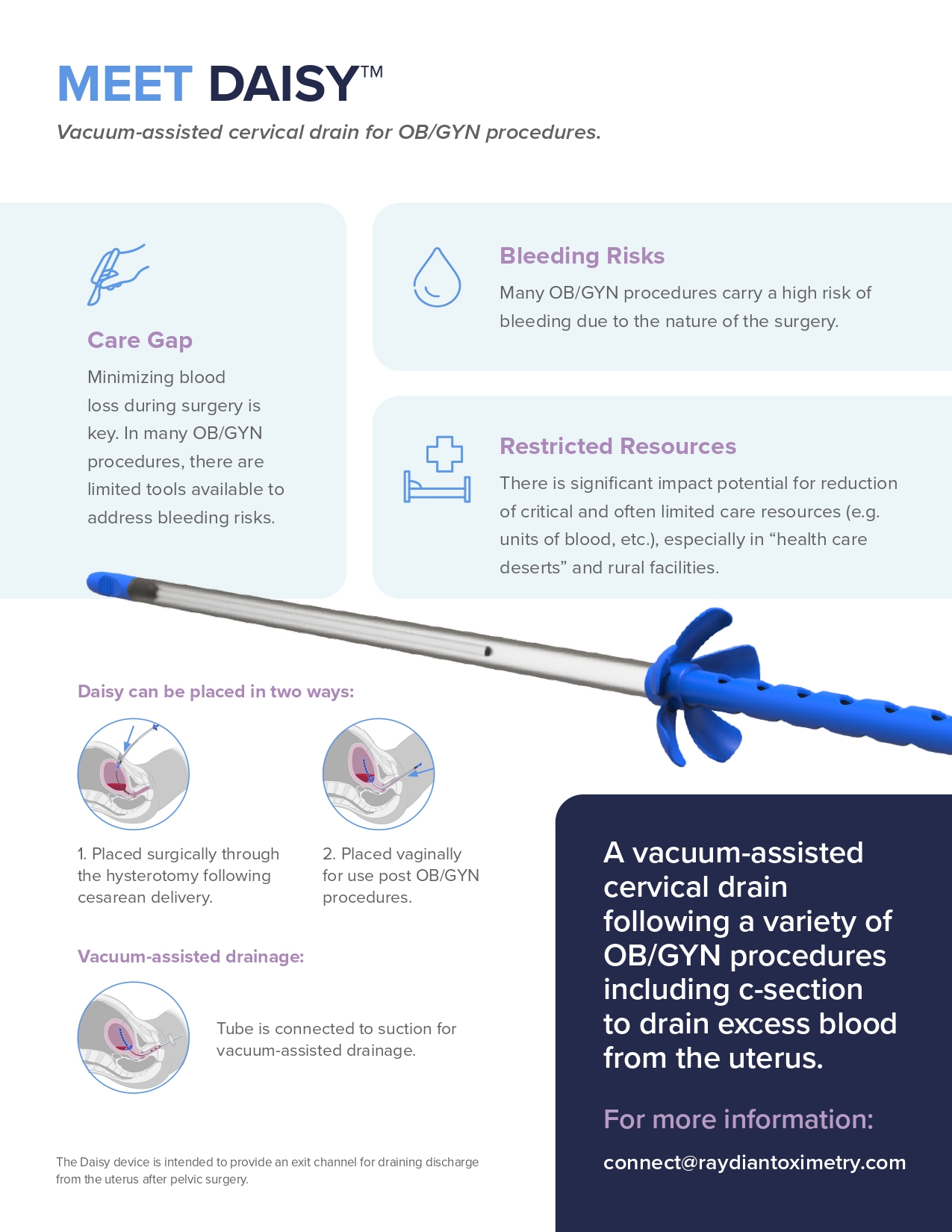OUR TECHNOLOGY
Two women’s health innovation verticals
Fetal Monitoring: We are introducing new technology to more accurately detect fetal distress, using noninvasive, transabdominal fetal pulse oximetry.
Uterine Bleeding Control: We have developed a versatile vacuum-assisted surgical tool for OB/GYN procedures.
Introducing

Pulse oximetry was invented in 1974 by Dr. Takuo Aoyagi. Commonly referred to as the 5th vital sign, pulse oximetry’s rapid adoption has shifted the paradigm in patient safety. Today, pulse oximetry exists in virtually every clinical setting as a means to diagnose low oxygen levels. Yet, no such technology currently exists for fetuses. Raydiant Oximetry is introducing Lumerah™, a safe, noninvasive fetal pulse oximeter that measures fetal oxygen saturation without adversely affecting the labor process.

Revolutionizing
labor & delivery

Why Lumerah?
Obstetrical providers struggle to determine which category II fetal heart rates will lead to newborn injury, as over 99% of these Category II tracings are false alarms or false positives. Lumerah’s noninvasive sensor allows a direct measure of fetal oxygenation.

Increased sensitivity and specificity
LumerahTM, in conjunction with CTG, will improve fetal surveillance during labor by improving the sensitivity and specificity for the detection of fetal distress.
Key Features
Life-improving
Due to its life-saving potential, the FDA has already assigned Lumerah™ ‘Breakthrough Device’ status in order to fast-track its market approval.
Accurate
In pre-clinical trials, the device has proven to be significantly more accurate than FHR monitors, increasing diagnostic accuracy by 80%.
Ease of Use
The device is easy to use, its data simple to interpret and integrates easily into existing technology.
Portability
Single-use disposable device is completely portable and convenient to deploy.
Reliability
Reassurance to continue labor and confidence to intervene.
Get in touch
Want to learn more about the investment opportunity? Send us a message and we’ll be in touch as soon as possible.

